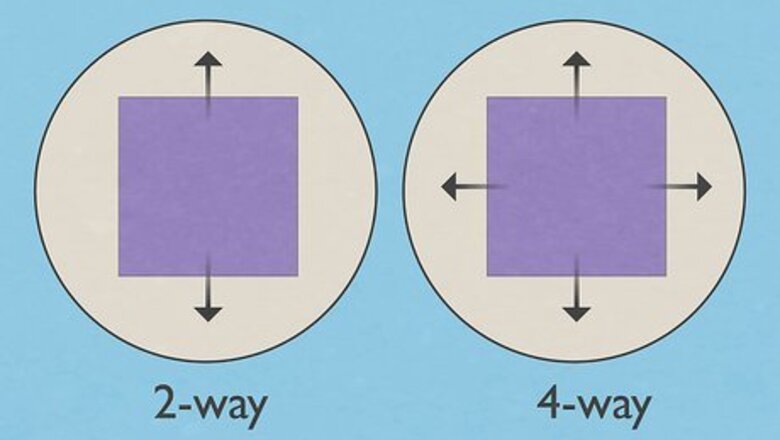
views
- Vinyl fabric is not designed to stretch normally, but 2-way and 4-way vinyl is capable of being stretched (2-way from left to right, and 4-way in any direction).
- You will likely need to pin the vinyl in place when you’re stretching it out to keep it from snapping back into its original shape.
- Use a heat gun set to the lowest setting available to gently heat the vinyl once you’ve stretched it over the surface you’re covering.
- You do not have to heat the vinyl at all if you don’t want an airtight fit against the surface you’re covering.
- If you’re reupholstering something, use a staple gun to secure the vinyl to the surface that you’re covering with your vinyl.
Heating the Vinyl
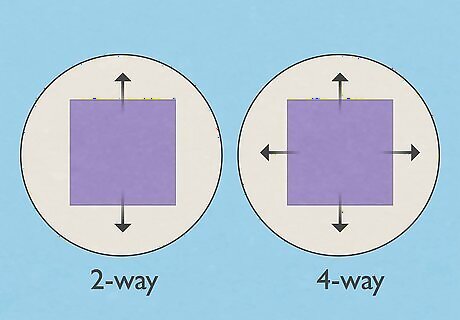
Acquire 2-way or 4-way stretching vinyl. Not all types of vinyl fabric have stretching capabilities. If you plan on expanding your fabric, make sure you purchase 1 of the following vinyl variants from a specialty fabric store: Two-way vinyl, which only stretches from left to right but is thicker and far more durable than 4-way vinyl. Four-way vinyl, which stretches both vertically and horizontally but is far thinner than 2-way vinyl, making it more susceptible to tears.
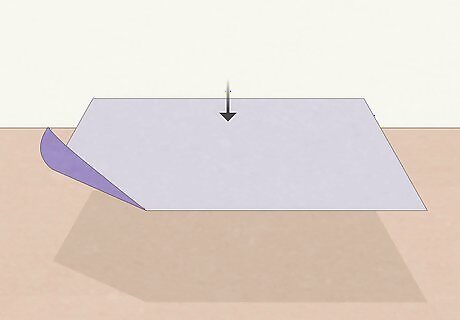
Place your vinyl facedown on a firm surface. Find a flat, clean table or working surface that has enough space for your vinyl. Then, lay the fabric on top of the table with the shiny side facing down. If you’re stretching out vinyl clothing, see if you can unzip the garment and lay it out flat. If you can’t, simply place it on the table as is.
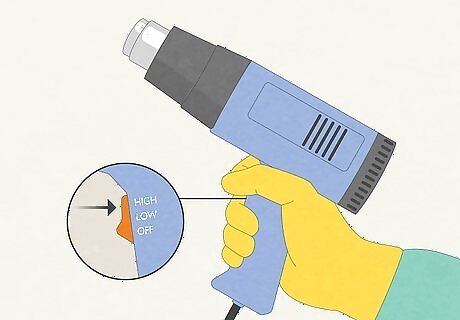
Turn on a heat gun and set it to high. To successfully stretch a piece of vinyl, you’ll need to heat the fabric to incredibly hot temperatures. This is best accomplished by using a handheld heat gun turned to its hottest temperature setting. You can find heat guns at most home improvement stores. Check your heat gun’s instruction manual for information on how to change its temperature setting. If you don’t have a heat gun, you can use a standard hair dryer turned to its hottest setting instead.
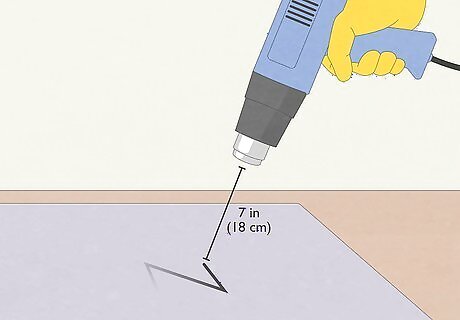
Hold the gun 7 in (18 cm) above the fabric and move it in a Z pattern. Place your heat gun or hair dryer 6 to 8 in (15 to 20 cm) above the fabric. Then, move it over the vinyl in a Z pattern to heat the material up. Make sure you keep the gun moving to avoid burning the vinyl. Tilt the Z after every pass to heat the fabric evenly. For the best results, heat your fabric in 1 sq ft (930 cm) increments. If a part of your vinyl isn’t heating up as quickly as the surrounding fabric, move the gun close to, but not touching, it for about half a second.
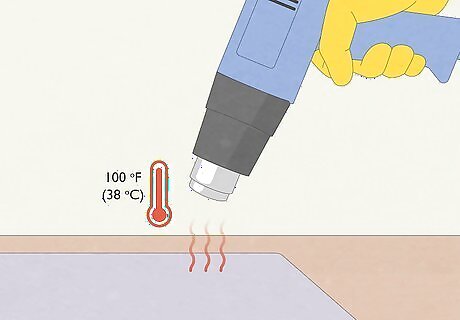
Heat the fabric until it is about 100 °F (38 °C). In most cases, vinyl is ready to stretch when it is between 90 and 110 °F (32 and 43 °C), or almost hot enough to burn your hands. The heating process will normally take between 1 and 3 minutes, though the exact amount of time will depend on how powerful your heat gun or hair dryer is. You can use a surface thermometer to find the temperature of your vinyl fabric.
Expanding the Fabric
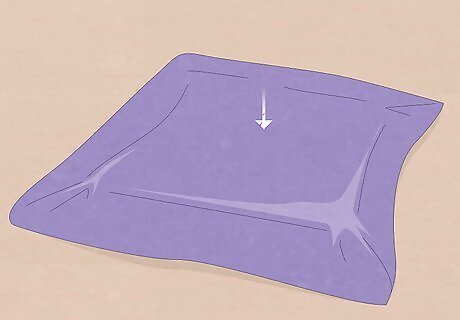
Place your vinyl over the object you're upholstering, if applicable. If you want to make your fabric a particular size, place the vinyl over an object that’s as large as you want it to be. If you’re stretching vinyl out for a specific reason, such as to reupholster a piece of furniture, place the fabric on top of the object in question. If you’d like, you can place your vinyl over the object in question before heating it up.
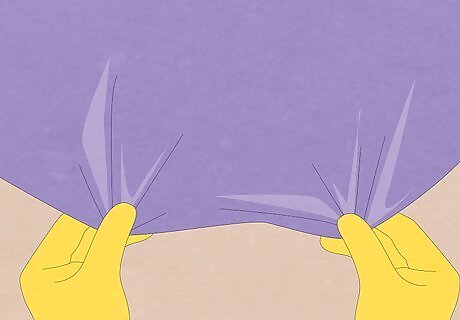
Stretch the vinyl between your hands. To stretch out your vinyl, grab 1 end of the fabric with your fingers and slowly pull it toward yourself. If you’re working with firm 2-way vinyl, feel free to use a lot of force while pulling. If you’re stretching thin 4-way vinyl, pull carefully to avoid tearing the fabric. If necessary, hold the other side of the vinyl down with a bar clamp or ask a friend to keep it in place.
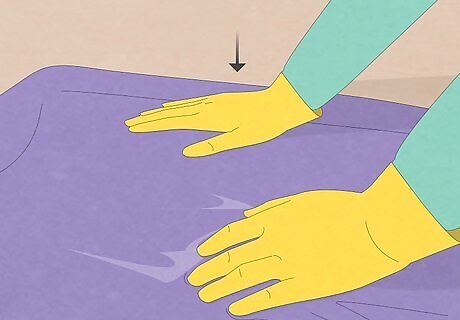
Press down on the fabric to remove wrinkles. As your vinyl stretches, it may develop small, unappealing wrinkles. To remove these, simply press down on the fabric with your fingers and smooth them out. If you’re stretching the vinyl over a specific object, make sure to press out any creases or air bubbles that form.
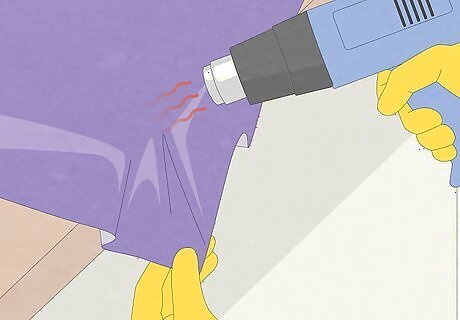
Apply additional heat if the fabric stops stretching. Over time, your vinyl will cool down and become harder to manipulate. If this happens while you’re stretching it out, grab your heat gun and run it over the material again. Do not press your heat gun to the vinyl fabric. If you do, you may damage the vinyl itself as well as the material underneath.
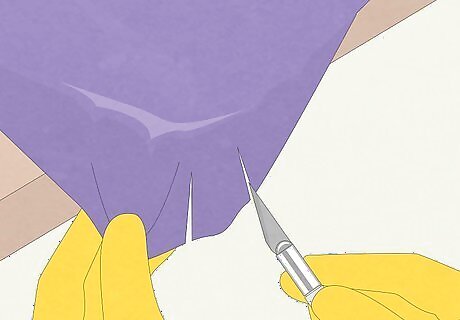
Make non-visible cuts along the edges of the fabric if you overstretch it. If your vinyl starts to overstretch, make small incisions along the edges of the fabric with a pair of scissors or a precision knife. This will give you the ability to pull on 1 portion of the fabric without affecting the other parts. Only use this technique on pieces of fabric where the edges won’t be visible, such as vinyl upholstery. If you’re pulling the vinyl around an object with curves, you may need to cut the fabric to help it better fit the object’s shape.
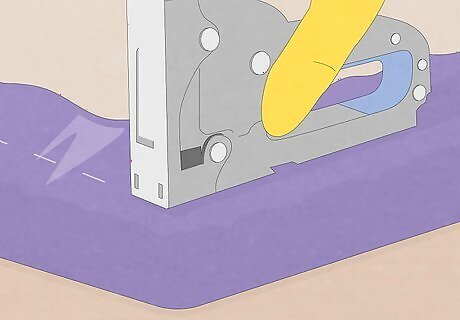
Secure the fabric with staples if necessary. If you’re using your vinyl to reupholster an object, you’ll need to secure the material to keep it from peeling off. To do so, pull the fabric as tight as you can and hold it down to the object. Then, use a staple gun to shoot staples into the vinyl fabric. Place staples between 1 and 2 in (2.5 and 5.1 cm) apart around the entire perimeter of the object. When finished, you should have a long line of evenly spaced staples. If necessary, ask a friend to hold the fabric down or use a bar clamp to keep it in place while you staple it.




















Comments
0 comment